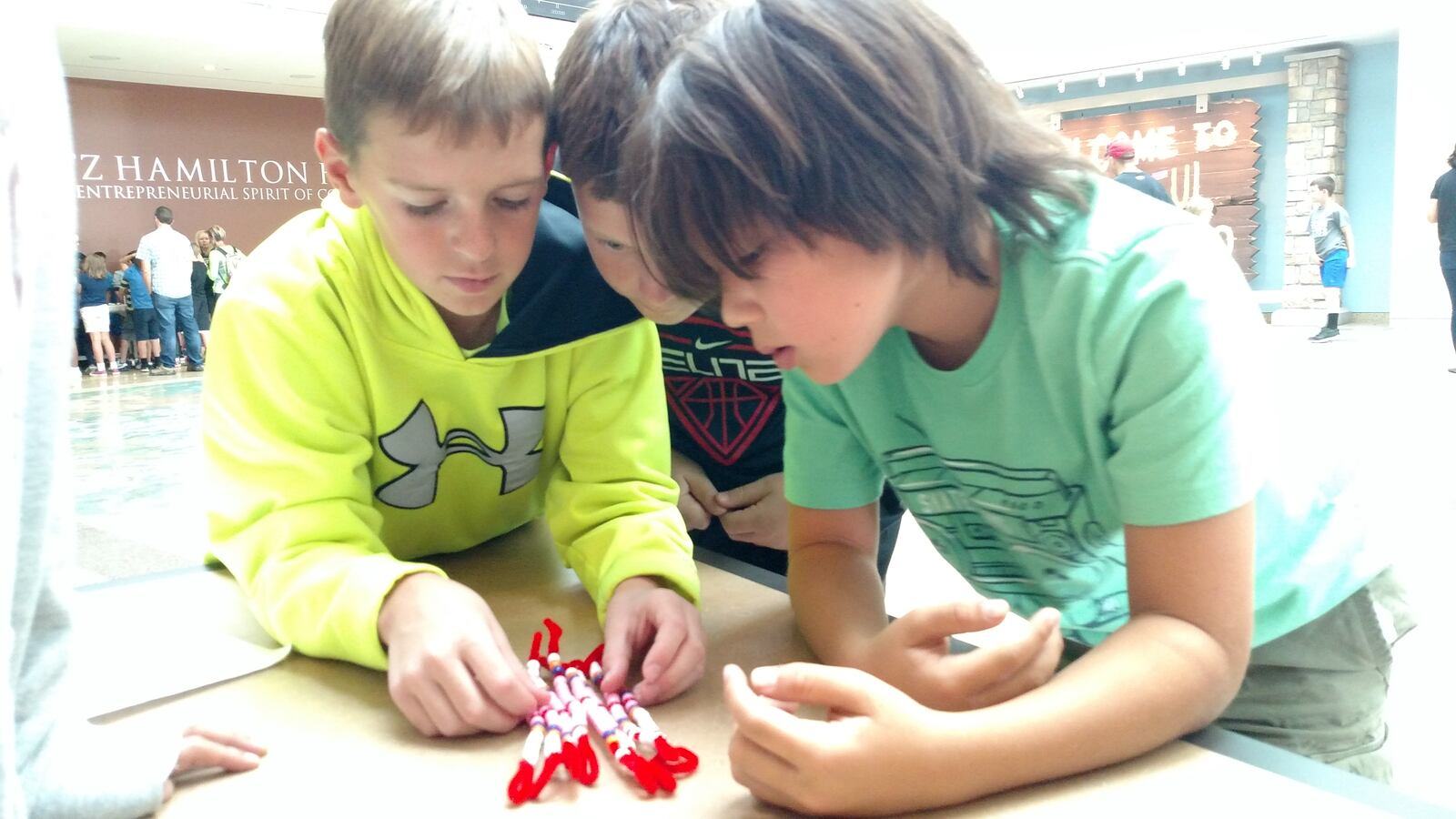Splayed on the marble floor, a group of fourth-graders arrange colorful strands of beads into a diamond pattern, mimicking the intricate beadwork of the Ute people.
This is part history lesson, part math lesson. The students from Zach Elementary in Fort Collins may not know it, but beading involves complex mathematics. Figuring out patterns and counting beads to make something beautiful — like the dazzling trim on a Ute cradleboard or the band of a hat — provide foundations for learning algebra and geometry.
That lesson, delivered Tuesday in the grand entry hall of the History Colorado Center in Denver, helped kick off a five-year initiative aimed at bridging cultures by integrating centuries-old Native American knowledge with Western science, technology, engineering and math, or STEM.
The project, bankrolled by a $2.2 million grant from the National Science Foundation, also will give Ute young people in Colorado and Utah hands-on field experience meant to inspire them to not only see the connections to their past but to pursue STEM careers.
“From a native perspective, we always talk about walking in two worlds,” said Ernest House Jr., executive secretary for the Colorado Commission of Indians Affairs, a project partner. “You walk in a native world and non-native world, with one foot in a moccasin and the other in a tennis shoe, and you have to balance those. This brings sort of the same approach to education.”
House is a member of the Ute Mountain Ute Tribe, one of three federally recognized Ute tribes involved in the project. Colorado’s Ute population is concentrated on two reservations in southwestern Colorado.
History Colorado — the agency that oversees the state’s archives, museums and preservation efforts — won the grant after falling short a year earlier, working in collaboration with the tribes to develop all the materials and activities.
One of the core pieces is exposing Ute young people to fieldwork in archaeology and ethnobotany — the scientific study of the traditional knowledge and customs of a people concerning plants and their medical, religious and other uses.
Organizers say Ute students will do archeological surveying at a gulch about an hour south of Grand Junction. They will traverse land, look for sites and record any that are found. Another group will travel to a plant-rich oasis in the San Luis Valley to study botany there. Tribal elders and other experts in the fields will be involved.
“We want Ute kids to not feel like STEM is ‘other,’ said Shannon Voirol, manager of exhibit planning for History Colorado. “There is all this STEM talk. ‘STEM, STEM, STEM.’ They have been doing STEM forever. Their families have been doing STEM forever. It is part of them. We want to really get that message through, so they do feel comfortable going into STEM careers and see themselves as STEM practitioners.”
The educational challenges facing Native American youth, many of whom live in dire poverty, are well-documented. Nationally, native youth post the worst achievement scores and the lowest graduation rates of any student subgroup.
In southwestern Colorado, Ute kids attend both public school and tribal schools.
Students on the Ute Mountain Ute reservation in Montezuma County — near the Four Corners area — enroll in schools in the Montezuma-Cortez School District, House said. The Southern Ute Indian Tribe, meantime, runs an innovative K-5 Montessori charter school that incorporates tribal traditions. Older students attend public schools in the Ignatio School District, House said.
The cross-cultural project also will involve science teachers in communities including Cortez, Durango and Bayfield, all of whom have worked on similar cultural exchange programs in the past.
Another goal is to expose the general Colorado student population to native knowledge — like the kids from the Fort Collins elementary school.
Karlee Maitland Gutierrez, a fourth-grade teacher at Zach Elementary, part of the Poudre School District, said she plans to incorporate what students learned about beading and other Ute practices into lessons that align with state academic standards.
With the grant money, History Colorado officials and their partners plan to develop “kits” of materials and activities for educators statewide, training for teachers, traveling programs and interactive online exhibits in which students can earn digital badges. Along with covering Ute knowledge on subjects such as beadwork and plants, the lessons will touch on the tribes’ engineering practices in building wood shelters, and sound amplification for music and dance.
The project’s aim is to engage 128,000 students, educators and experts in Colorado and Utah, officials said.
Other opportunities abound, said Liz Cook, an educator for History Colorado. Cook notes that much Ute STEM learning is family learning — mothers sharing plant traditions with daughters, for example, with knowledge being passed down from generation to generation.
“There is a lot of research in informal science education about family learning — looking at science and education as not just being in a classroom with test tubes, but how people cooking together builds science literacy, how doing gardening together builds science literacy,” she said. “So when we cook together, or are out fixing the car — that is a science or math learning opportunity.”
Read Chalkbeat’s recent special report on STEM education in Colorado.

